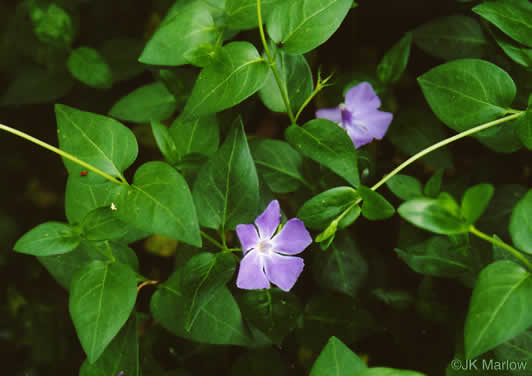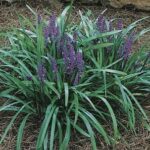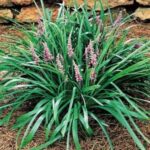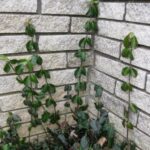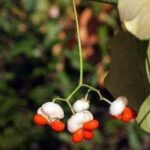As we grow increasingly aware of the importance of bio-diversity, we are also learning that small decisions we make at home can have far-reaching consequences well beyond our property lines. Ground cover for part- to full-shade gardens has always been a particular challenge. Some of the more common ground cover and border plant solutions employed here in South Carolina are particularly problematic — but there are native alternatives that can be just as aesthetically pleasing, while also being non-threatening and even beneficial.
Monkey Grass (muscari) is a common name for a group of plants that are among the South’s favorite border plants. They are readily available, inexpensive, fast growing, and low maintenance. Unfortunately, depending on which species it is, it also tends to be an invasive species.
Monkey Grass (Liriope muscari) with black berries and Dwarf Mondo (Ophiopogon japonicus) with blue berries are non-native clumping varieties commonly seen in South Carolina. Birds eat the non-toxic berries, spreading them into the wild where they grow rapidly, forming impenetrable underground mats, blocking and out-competing our native plants.
Liriope spicata, however, is another species that is less particularly aggressive — but it’s hard to tell the difference between species.
Telling the difference:
L. muscari displays purple flowers while L. spicata flowers are white or lavender and has much narrower leaves. Both have black berries in the fall.
- L. spicata
- L. muscari
Note: Although L.muscari is not classified ‘invasive’ in SC because it is a clumping variety and tends to stay in place; however, the berries are eaten by birds and spread to other locations, and for this reason we discourage planting it nonetheless.
English ivy (Hedera helix) is another creeping groundcover that was introduced circa 1800 into American landscapes and is today loved by some and hated by others. Contained, it offers a lovely texture that quickly fills in. But it easily escapes pots and beds to cover shrubs and trees, climb structures, and out-compete even turf grass. And no, it has no regard for property lines!
Wintercreeper (Euonymus fortune) is a similarly problematic creeping vine whose berries are digested by birds and spread into the wild where they become a threat to our state conservation areas. It grows aggressively, covering structures and trees in a short time, and is very difficult to effectively eradicate.
- Photo courtesy of Annheathen on iNaturalist
- Photo courtesy of Virginia NPS
The last plant we’ll touch on is Periwinkle (Vinca minor and V. major). This family of pretty little flower plants is popular here in South Carolina and carried by many commercial nurseries. They are powerfully invasive perennials that easily escape their beds, forming a dense carpet, out-competing other flora.
Alternate Native Ground Covers
The good news is that there are plenty of attractive and beneficial native alternatives that are commercially available in South Carolina. Visit our “Right Plant Right Place” page to see several new guides listing some of our favorites with the reasons why.
Here are a few more resources:

